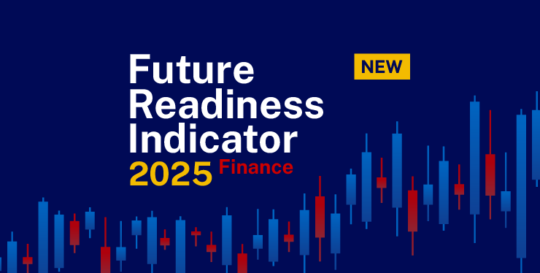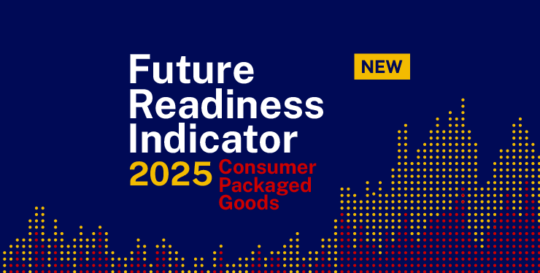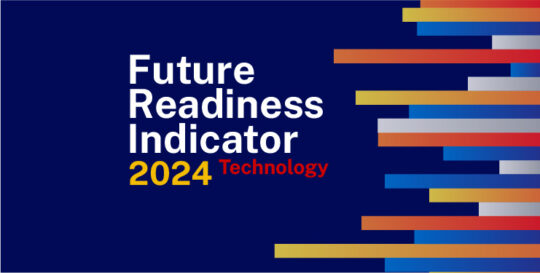IMD business school for management and leadership courses



Future Readiness Indicator 2025
Future ready organizations navigate extreme uncertainty through agility
- Organizations across every sector are navigating extreme volatility and uncertainty. From war and sanctions to trade disputes and tariffs, businesses and their leaders need to be agile and able to respond to the changing parameters.
- BYD has erased Tesla’s once-unassailable lead.
- L’Oréal and Coca-Cola proved that investment in technological innovation and AI insights is key to staying ahead of their peers.
- Mastercard and DBS have turned compliance into competitive firepower.
- Find out more about the Future Readiness Indicator here.
Lausanne, Switzerland, 20 May 2025: Two characteristics consistently emerge across future-ready companies in the first edition of the 2025 Future Readiness Indicator, which focuses on the automotive, finance, and consumer packaged goods (CPG) sectors. This is the ability to balance agility with technological patience.
“Agility is all about quick pivots. You spot new conditions, shift direction, tweak policies, and ride cultural waves, always evolving so you stay ahead. Technological patience is the flip side. You know where each innovation sits on the adoption curve, so keep your finances strong enough to bankroll smart digital experiments when the timing is right,” said Howard Yu, Director of the IMD Center for Future Readiness.
The 2025 Future Readiness Indicator measures how 40 financial institutions, 21 automakers, and 26 CPG companies stack up against a new reality of turbulent economic policies, increased innovation, tightening regulations, and heightened consumer expectations.
Future readiness by sector
Firms that pair disciplined governance with fearless experimentation are compounding advantages across the three sectors.
Automotive
The future of the global automotive industry: The race is far from over
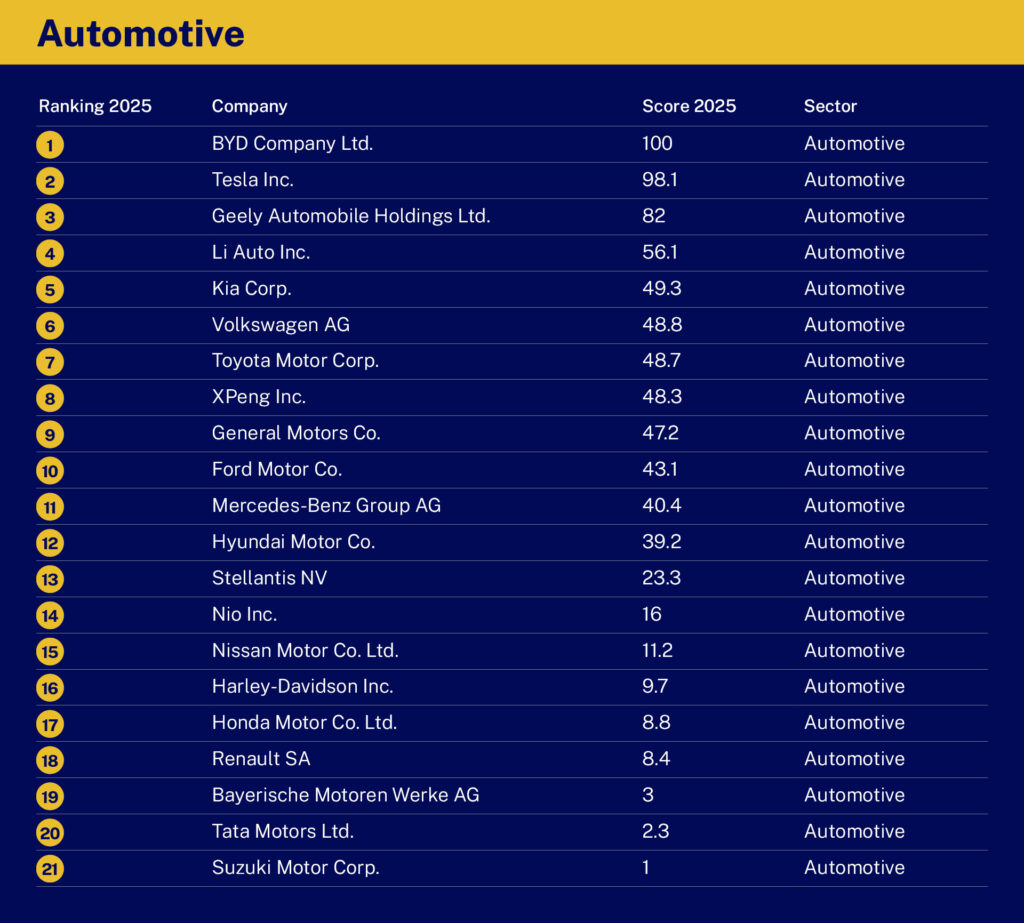
The automotive industry is being upended by electrification, digitization, and geopolitical shifts. A dramatic move in competitive positions is becoming increasingly evident as Chinese electric vehicle (EV) manufacturers are now challenging and, in some cases, surpassing traditional automotive giants.
- BYD leads the Indicator for the first time, followed closely by Tesla.
- Chinese dominance is deepening; three Chinese manufacturers make up the top four positions.
- The top tier is dominated by companies with a strong EV and software focus.
- Traditional automotive manufacturers are experiencing concerning trends and declining revenues, whereas Chinese manufacturers are demonstrating substantial growth.
- Supply chain digitalization and agility are essential to navigate a complex trade environment.
- Investing in brand and customer experience for global competitiveness is essential.
Consumer Packaged Goods
The future of CPG: Opportunity is on the horizon
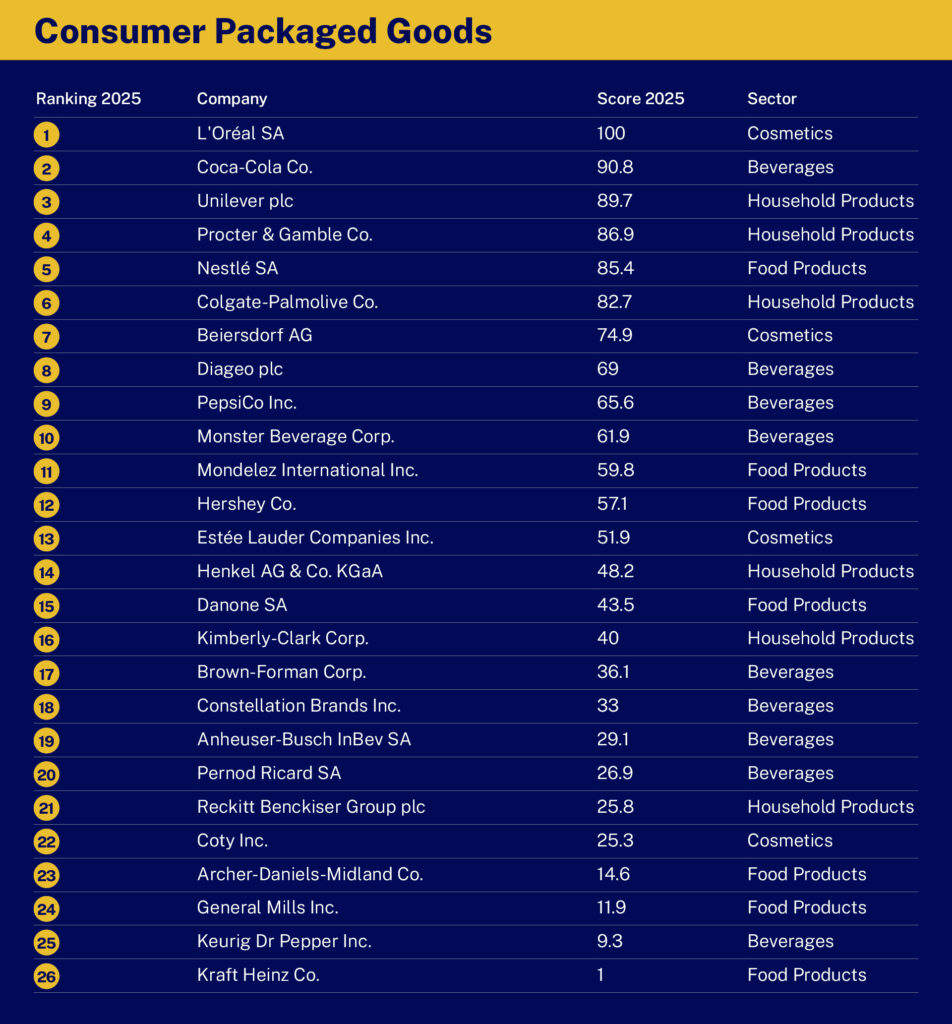
The Consumer-Packaged Goods (CPG) sector faces a dynamic and challenging landscape. Inflation is easing, but it still drives value-conscious, price-sensitive consumer behavior. Meanwhile, demands for personalization, better experiences, health, wellness, and sustainability are rising. What can be learnt from the leaders, such as L’Oréal, which once again leads the Future Readiness Indicator 2025?
- The standout companies – including L’Oréal, Coca-Cola, Unilever, Procter & Gamble (P&G), Nestlé, and others – are not necessarily the largest by revenue, but they excel at anticipating trends, innovating, and adapting ahead of their peers.
- The 2025 leaders also show how consistent investment in innovation, data, and talent turns uncertainty into advantage.
- L’Oréal’s focus on technological innovation to meet modern consumer needs sees it maintain its top spot as the #1 future-ready CPG company.
- Coca-Cola, in second place, shows how its investment in AI-driven insights to fine-tune its supply chain has delivered – as has its culture of evidence-based decision-making and broken-down silos.
Financial Services
The future of Finance: Innovation underpins success
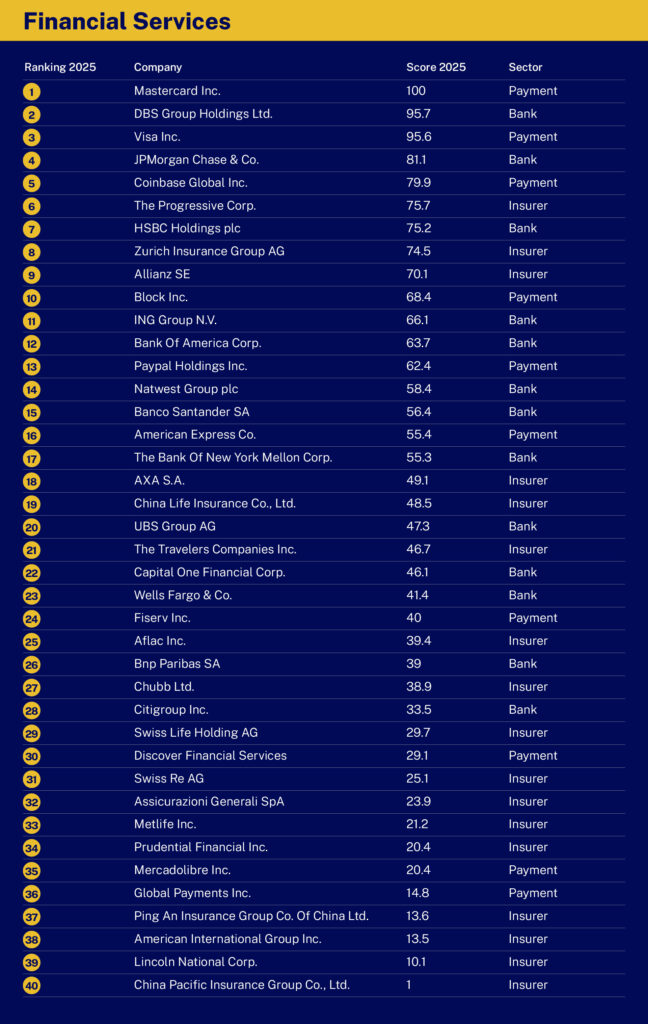
Future‑readiness is no longer confined to payments or pure‑play banking. Financial institutions that demonstrate agility and reinvent the way they operate, reinvigorate their processes, and invest in AI to stay ahead of the pack now lead in a continually evolving financial services landscape.
- Payments networks rule the podium: Asset-light, API‑driven business models keep Mastercard and Visa nimble; both scored very high on Business Diversity and Innovation Outcomes thanks to embedded finance partnerships and venture incubators
- Digital pure‑plays leapfrog legacy peers: Coinbase moves into the top five because tokenized‑asset custody now counts toward both growth expectations and innovation yield – two factors where many universal banks lag
- Asian trailblazers emphasize culture and cloud: DBS’s early cloud‑native pivot and “hackathon” talent culture boost its R&D and ESG‑talent sub‑scores, lifting it above larger Western banks with heftier balance sheets but slower cultural velocity
- Insurance giants show split performance: Progressive leads the insurer pack for the first time due to its investments in AI. Zurich and Allianz crack the top 10 by coupling balance‑sheet strength with climate‑adjusted underwriting, while US multiline carriers sit mid‑table as long‑tail liabilities and low digital engagement drag on investor sentiment.
- Regulatory adaptability is a silent differentiator: Firms that developed modular compliance stacks for DORA, CSRD, and MiCAR scored higher on Cash & Debt (fewer fines) and Innovation Outcomes (faster product releases in regulated sandboxes)
Future Readiness Indicator report: Future Readiness in the Era of Adaptability
The Future Readiness Indicator report, Future Readiness in the Era of Adaptability, takes a deep dive into the data and showcases how automotive, consumer packaged goods, and financial services companies have performed in this year’s indicator. The report looks at the forces transforming these sectors in 2025 and offers insights into what companies can do to prepare. It also takes an in-depth look at which companies are leading the pack and those that are falling behind. Visit the Future Readiness Indicator webpage to download the report.

